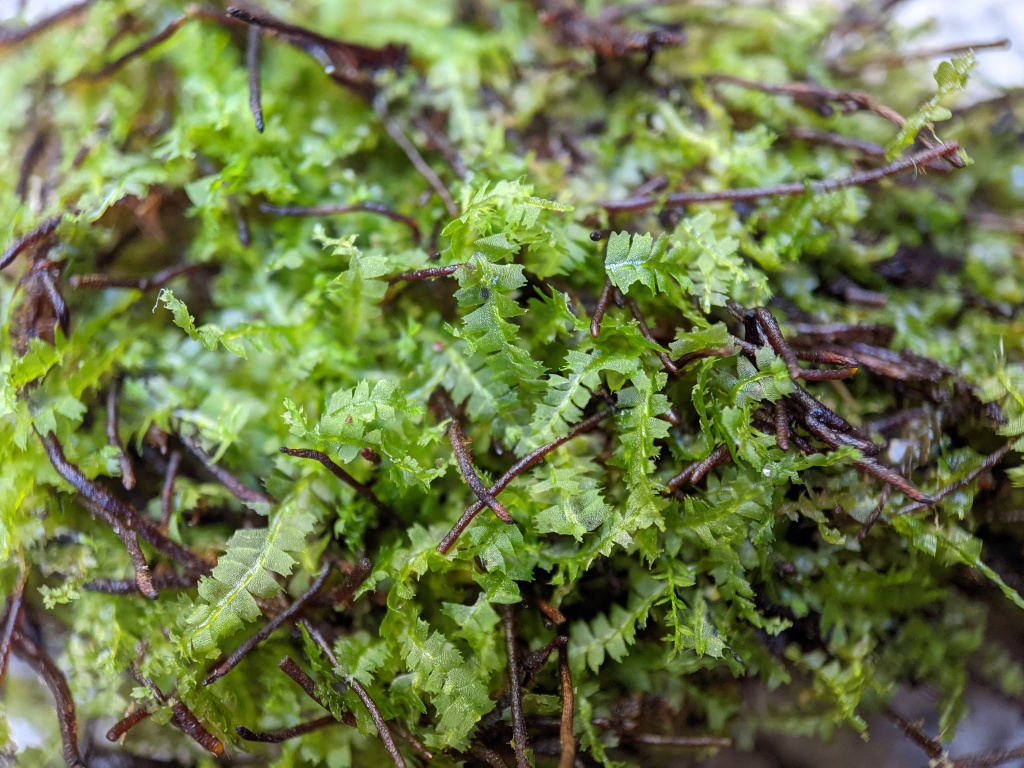Leptophyllopsis
Epiphytic, lithophytic or terrestrial, dioicous. Asexual reproduction by caducous lateral leaf teeth. Stems irregularly branched; branches emerging from main stem near and abaxial to a lateral leaf with the basiscopic half often modified and without a collar of tissue at its base, or emerging from near underleaves and with a collar of tissue at base. Lateral leaves ovate-oblong to almost rectangular in outline, usually irregularly dentate or lobed at apex, with around 2–4 main teeth or lobes, often partially or completely detached as asexual propagules, alternate, plane to slightly convex, with near horizontal insertion, not extending to stem midline adaxially, leaving a leaf-free strip of 2–3 cell rows between it and leaf on opposite side of stem, distant to contiguous, often with an iridescent sheen. Underleaves with two main triangular lobes, with or without an additional tooth on either side, wider than stem width, narrowly connate with lateral leaf with acroscopic margin closest to underleaf, free from other lateral leaf, distant, weakly convex when viewed from below. Leaf cells mostly pentagonal or hexagonal, smooth, thin-walled, without trigones, with 19–45 oil bodies; oil bodies homogenous, fusiform to ovoid. Androecia on short branches, with or without normal leaves, emerging from near underleaves. Gynoecia on short branches emerging near lateral leaves.
A single species in New Zealand and south-east Australia (Engel & Glenny 2019).
Engel, J.J. & Glenny, D. (2019). A Flora of the Liverworts and Hornworts of New Zealand, volume 2. Missouri Botanical Garden Press: St Louis.
 Spinning
Spinning